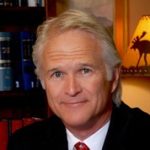The Supreme Court of the State of Colorado answered that question in Catholic Health Initiatives Colorado d/b/a Centura Health – St. Anthony North Hospital v. Earl Swensson Associates, Inc., (2017 CO 94).
In March 2016, Catholic Health filed suit against architectural firm Earl Swensson Associates (“ESA”) after ESA designed Catholic Health’s new hospital, Saint Anthony North Health Campus (“Saint Anthony”). Catholic Health alleged that ESA breached its contract and was professionally negligent by failing to design Saint Anthony such that it could have a separately licensed and certified Ambulatory Surgery Center (“ASC”).
In December 2016, Catholic Health filed its first expert disclosures, introducing Bruce LePage (“LePage”) and two others. Catholic Health described LePage as an expert with extensive experience in all aspects of preconstruction services such as cost modeling, systems studies, constructability, cost studies, subcontractor solicitation, detailed planning, client relations, and communications in hospital and other large construction projects. Catholic Health chose LePage to testify about the cost of adding an ASC to Saint Anthony. LePage’s expert report estimated that it would cost $11 million to repair the hospital. ESA then filed its own expert report, which stated that LePage’s estimates were insufficiently detailed.
ESA filed a motion to strike Catholic Health’s designation of LePage as an expert, arguing that his report did not meet the requirements of Rule 26(a)(2)(B)(I). ESA said LePage’s report did not identify the information, facts, or assumptions on which he based his opinions, or the documents that he considered. ESA argued that the lack of detail in LePage’s report prevented ESA from being able to effectively cross-examine him. ESA argued that excluding LePage as an expert was the proper remedy because Rule 26(a)(2)(B)(I) limits expert testimony to opinions that comply with the Rule, and LePage offered no opinions in compliance. Catholic Health argued that the basis for LePage’s opinion was his experience, which did not need to be included in the expert report or supplemented by a specific breakdown of cost estimates. Catholic Health also argued that, if LePage’s report was insufficient, Rule 37(c) governed sanctions for these types of discovery violations.
The trial court agreed with ESA and found that LePage’s report lacked sufficient detail as to the basis for his opinions, meaning it did not comply with the requirements of Rule 26(a)(2)(B)(I). When determining the remedy, the trial court noted that it approached the issue with “trepidation” because Rule 26 had been recently amended. The court explained that the amendment to Rule 26 added a provision saying that expert testimony shall be limited to what is disclosed in detail in the expert’s report. As such, the court decided to exclude LePage’s expert report from evidence and to preclude LePage from testifying. The trial court explained that it believed Rule 26(a)(2)(B)(I) to be controlling on the question and that it did not consider Rule 37(c)(1) in its analysis.
The Supreme Court stepped in because if the expert testimony was improperly excluded, Catholic Health would be unfairly prejudiced by omitting any evidence of damages.
The Court examined the relationship between Rule 26(a)(2)(B)(I) and Rule 37(c)(1). Rule 26(a)(2)(B)(I) defines the disclosure requirements for expert testimony. It requires that experts provide a written report including all opinions that the expert intends to express at trial and all data upon which the expert based his or her opinion. Rule 37(c)(1) works with Rule 26 to allow the trial court to sanction a party for failing to comply with discovery requirements, including those found in Rule 26(a). This rule was also amended in 2015. Before the 2015 amendments, Rule 37(c)(1) provided that a party who failed to disclose information required by Rule 26(a) without substantial justification may not present that undisclosed evidence unless such failure is harmless. The Court held that the harm and proportionality analysis under Colorado Rule of Civil Procedure 37(c)(1) remains the proper framework for determining sanctions for discovery violations. Against this backdrop, we conclude that Rule 37(c)(1) remains the controlling authority for determining sanctions for Rule 26 discovery violations, and that the trial court erred by not conducting the harm and proportionality analysis required by Rule 37(c)(1).
The Metier Law Firm is committed to assisting people with personal injury claims throughout Colorado, Wyoming and Nebraska, and we frequently serve as co-counsel to law firms nationwide. Tom Metier recently secured the largest personal injury verdict in Colorado

Nationally recognized litigation attorney Thomas Metier practice areas include traumatic brain injuries, spinal cord injuries, trucking accidents and motor vehicle accidents. He is licensed to practice in Colorado, Wyoming, the U.S. District Court–District of Colorado, and the U.S. District Court–District of Wyoming, the 10th Circuit Court of Appeals and the U.S. Supreme Court.













Comments for this article are closed.